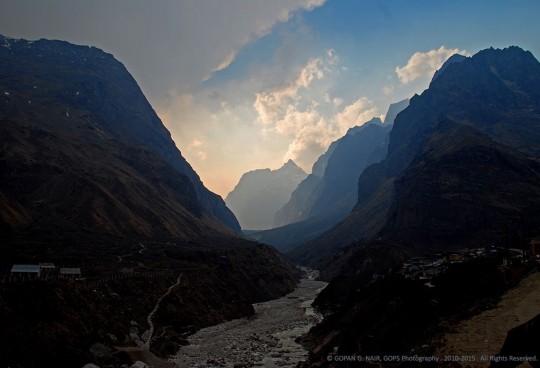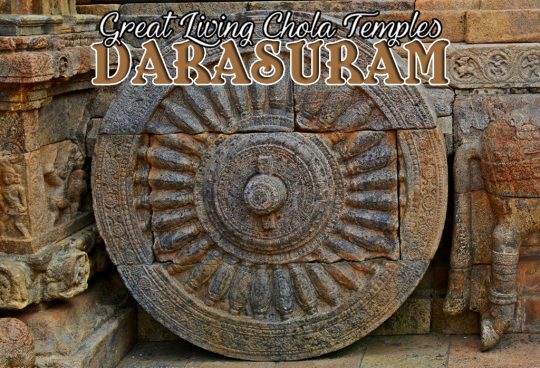The group of three magnificent architectural wonders dating back to the Medieval Chola period are collectively known as ‘The Great Living Chola Temples’, and are still standing proudly in Thanjavur, Tamil Nadu. These remarkable temples, Brihadiswara (<click), Gangaikondacholapuram and Darasuram (<click) , are celebrated for their exceptional Dravidian architecture, profound scientific knowledge, and astonishing artistic craftsmanship.
Before delving into this page, I recommend acquainting yourself with the story of Raja Raja Chola and his monumental creation, the Brihadiswara Temple.
Rajendra Chola-I (இராசேந்திர சோழன்), the son of the illustrious Rajaraja-I, reigned from 1012 to 1044 AD. Renowned for his conquest that extended as far north as the Ganga river, he was conferred the title Gangaikondacholan, signifying ‘The Chola who brought Ganga.’ Rajendra, commanding one of the most formidable naval forces of his time, subsequently expanded his father’s kingdom across distant shores. His reign witnessed the Chola Kingdom’s dominion over large swathes of Southern India, as well as territories in Northern India such as Kalinga (present-day Orissa), Bihar, and Bengal/Bangladesh. Moreover, their influence extended to foreign regions including Sri Lanka, Burma, Bali, Java, Sumatra, Kadaram (now Kedah in Malaysia), and Cambodia. It is notable that the Hindu traditions observed in Indonesia and the architectural marvel of Angkor Wat in Cambodia are enduring legacies of the Chola dynasty.
According to historical records, in 1014 AD, following the death or possible murder of Raja Raja Chola, Rajendra Chola made the decision to relocate the Chola capital to a new site. This move was likely due to the belief among historians that his father’s demise was an ill omen, leading to the association of the Brihadisvara temple with a cursed reputation.
Between 1017 and 1018, Rajendra Chola commanded his naval forces to Sri Lanka with the aim of avenging his father’s death. He successfully seized control of the entire island, capturing King Mahinda-V of Sri Lanka and transporting him to India. King Mahinda-V was then incarcerated adjacent to Rajendra Chola’s palace at Gangaikondacholapuram, where he remained until his passing.
Rajendra Chola decided to establish his new capital at Gangaikondacholapuram, located 70km from Thanjavur and close to Kumbakonam. His aim was to construct a larger Brihadiswara temple, commencing the project in 1025 AD and completing it by 1035 AD. The temple, featuring a similar architectural style to the grand temple in Thanjavur but slightly smaller in size, boasted a nine-story main tower (Gopuram) standing at a height of 185 feet. The fortified temple complex, encompassed by large granite walls, unfortunately suffered partial demolition by the British for the construction of a dam. The Gangaikondacholapuram temple stands as a remarkable display of Chola craftsmanship, adorned with exquisitely beautiful sculptures and carvings on its walls.
Moreover, the main Shiva Linga inside the temple surpasses the one at Brihadiswara temple in size, ranking as one of the largest in Southern India with a height of 13.5 feet and a circumference of 60 feet. Notably, the Linga’s foundation is filled with a precious stone named Chandrakanta, known for its purported ability to maintain a cool environment during hot seasons and provide warmth during cold weather. The temple’s walls boast inscriptions portraying the achievements of the Chola dynasty. Additionally, Rajendra Chola orchestrated the introduction of Ganga water from the North of India, filling a pond adjacent to the temple and adorning it with a colossal Lion statue, which still stands on the right-hand side of the temple grounds. It’s worth noting that Rajendra Chola’s nearby palace currently lies in complete ruins.
The magnificent Nandi statue standing guard at the temple entrance is one of the largest in Southern India and is positioned 200 meters away from the Sanctum. In addition to its religious significance, the bull, crafted from limestone, serves another purpose. It has been strategically placed to reflect sunlight onto the Sanctum Sanctorum and the main Shiva Linga throughout the day. Despite the typical darkness inside many Indian temples without oil lamps or electric lights, the inner corridor of the Gangaikonda Cholapuram temple remains illuminated throughout the day, even when the lamps are extinguished.
During the reign of Rajendra Chola, the kingdom experienced tremendous prosperity through flourishing trade and abundant wealth. He was responsible for the construction of numerous temples and the creation of the expansive CholaGangam lake, which extended over 22 kilometers, providing essential water for both drinking and irrigation purposes. Gangaikondacholapuram served as the capital of the Chola empire for 250 years. However, ongoing conflicts with neighboring kingdoms led to its eventual decline. Sri Lanka gained independence from Chola rule, and subsequent revolts by the Hoysalas and Chalukyas led to the reclaiming of the Deccan region in 1216. The Pandyans’ invasion in 1257 ultimately marked the complete collapse of Chola authority by 1279.
My exploration for images or sculptures of Rajendra Chola-I led me to two distinct temples near Bangalore in Karnataka. The Kolaramma temple, situated near Kolar in Karnataka, originally belonged to the Ganga dynasty in the early 3rd century. Later, it came under the control of the Cholas, followed by successive rulers such as the Hoysalas and Vijayanagara. Notably, at the temple’s entrance, a stone relief depicting Rajendra Chola-I engaged in battle can be found. Moreover, the interior stone walls of the temple feature numerous Tamil inscriptions of Rajendra Chola in an ancient script, unfamiliar to many in contemporary times.
The ancient tradition of worshipping idols of kings, alongside other Gods in temples, is evident in the presence of a statue of Rajendra Chola-I inside the sanctum of Bhoga Nandeeshwara temple (<Read about it here) in Nandi Village near Bangalore. Tamil inscriptions around the temple also point to the Chola influence in the area. However, limited information and research papers are available about these two temples and their connections to the Cholas.
The Cholas will always be remembered as one of the greatest rulers of India, and their legacy, immortalized in solid stone, will endure through the ages.
Join me as we embark on our next adventure to uncover the marvels of ‘The Great Living Chola Temples’ at this link here >> Darasuram (<click) .





















Venkatachalam R
January 20, 2018
I am your follower for the past several years and always enjoyed your travel stories. This series on Chola rulers has come out really well. Superb pictures as well. I would love to see more of your works. Thanks.
GOPAN NAIR
January 21, 2018
That sounds good to me. Let’s travel together to see this wonderful land. Thanks a lot for your encouragement.
Globe Trotter
January 21, 2018
Story telling at its best. Followed your travelogues for a long time . Each one is unique and better than the other. Incredible pictures add glory to the stories too. Keep up the good work, my friend. All the best.
GOPAN NAIR
January 21, 2018
Nice to know that you liked my stories & pictures. Thank you very much & hoping for your continuous support.
Narayan Rao
January 24, 2018
Chandrakanta gem (moonstone) has astrological significance to calm the mind of a person who wears it. Ancient Greeks & Romans used to wear moonstone jewellery it seems. Interesting to know that it has been used here in this temple. Great story telling.
GOPAN NAIR
January 24, 2018
Appreciate your comments. Never knew much about Chandrakanta stones. Thanks for the information. Have a great day.
Karnataka Travels
May 14, 2018
Interesting information, well compiled. Spectacular pictures too. Expecting detailed information on Chola temples in Karnataka.
GOPAN NAIR
May 14, 2018
Thanks for the comments & suggestions. I am planning for a write up on the mentioned subject soon.
RAJASEKHAR N
June 28, 2018
I have been searching for the sculpture of Rajendra Chola for a long time. Thanks for your efforts to bring Chola connections in Karnataka through these wonderful blogs.
GOPAN NAIR
June 29, 2018
It is nice to find out that you have gone through the entire blog page. Story of Chola empire is really interesting and there is a lot to explore.
Keven Wadford
November 23, 2020
Thanks for your marvelous posting! I seriously enjoyed reading it, you might be a great author.I will make sure to bookmark your blog and definitely will come back sometime soon. I want to encourage you to definitely continue your great posts, have a nice holiday weekend!